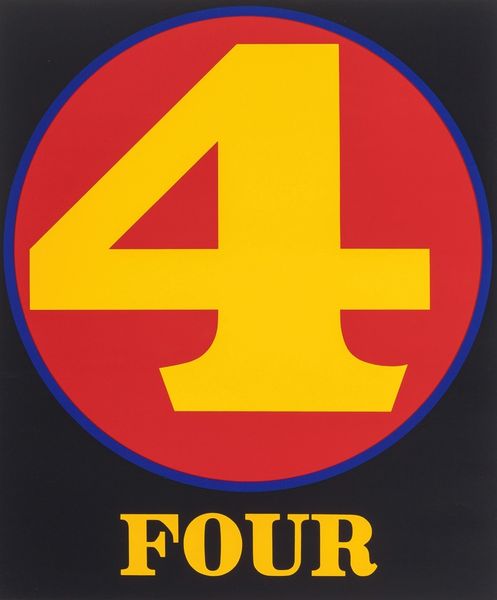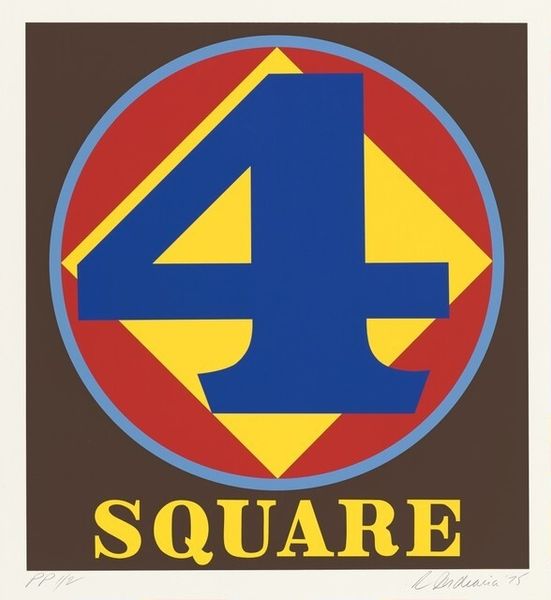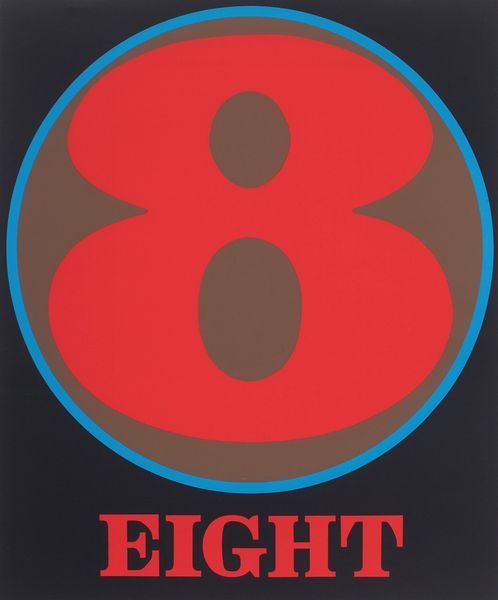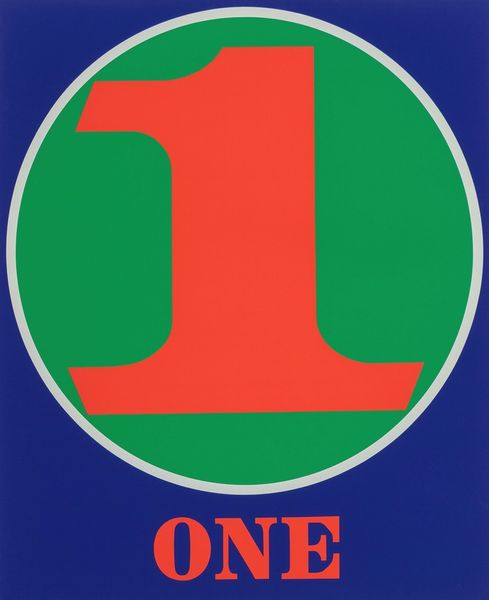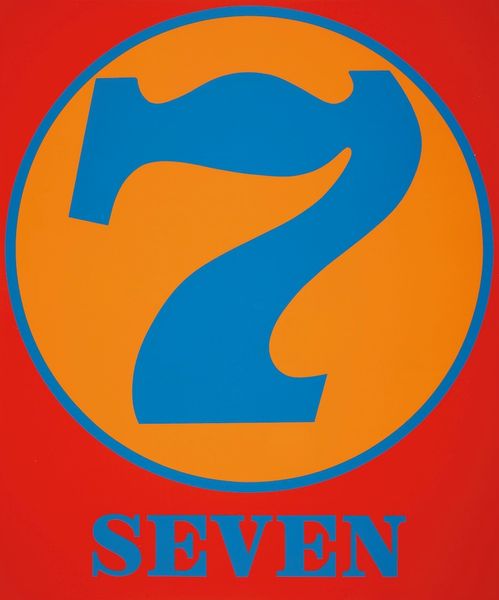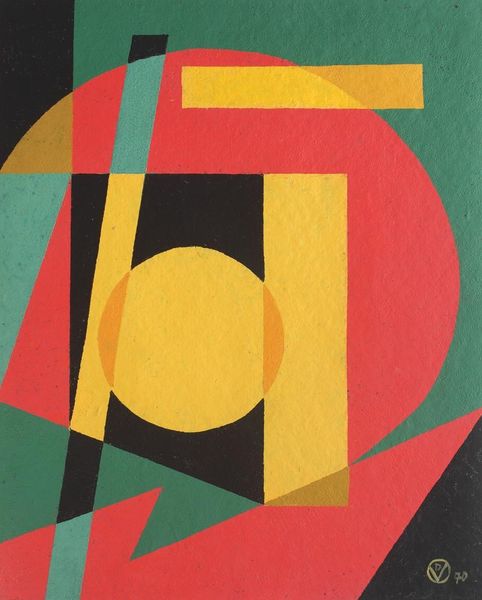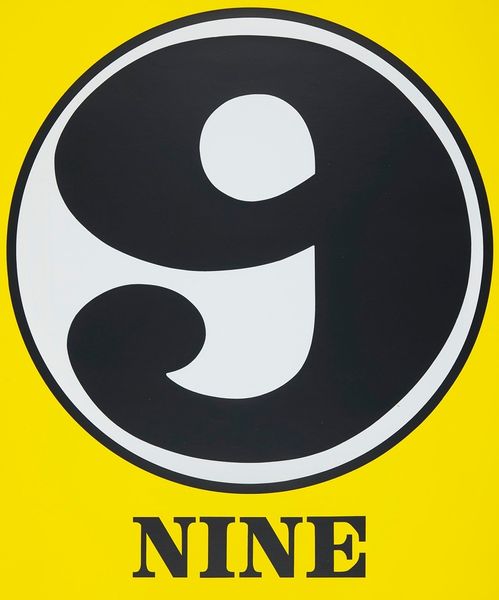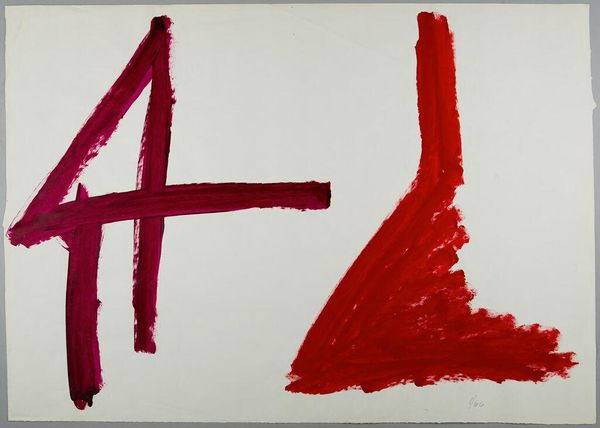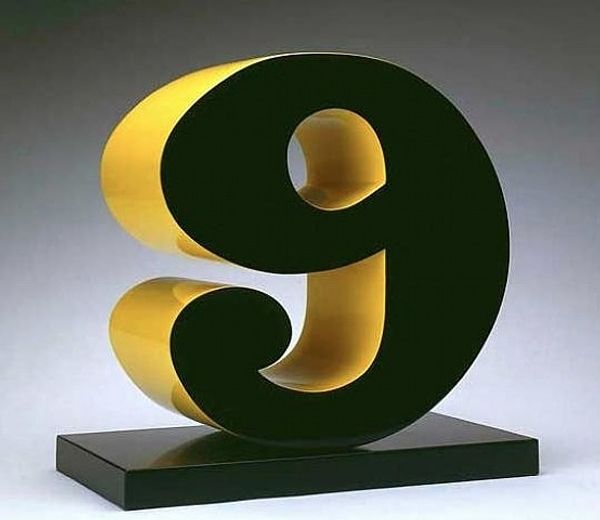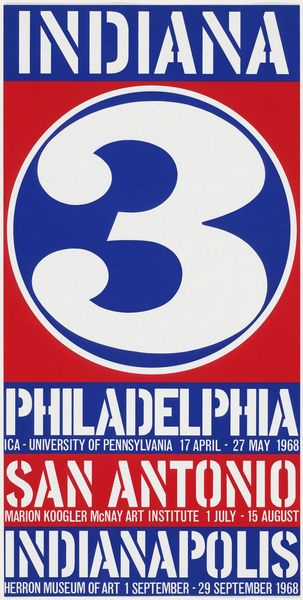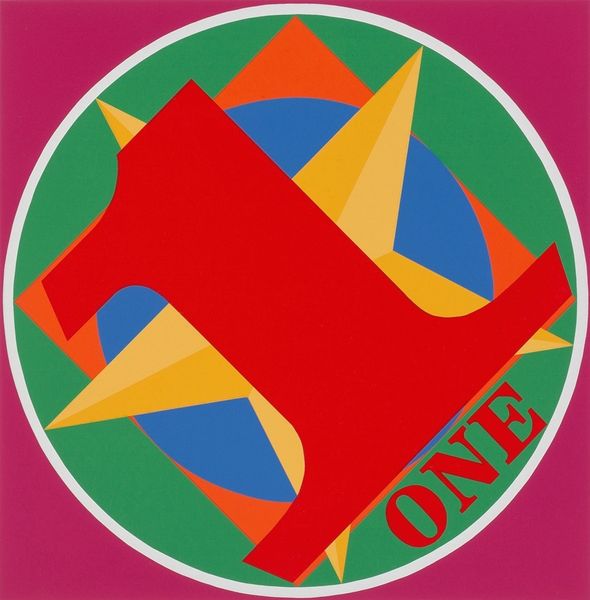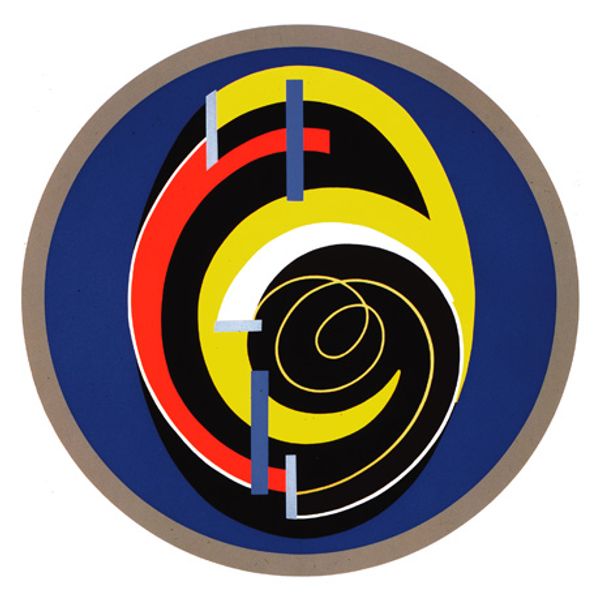
print, typography
# print
#
op art
#
pop art
#
typography
#
geometric
#
abstraction
#
pop-art
Copyright: Modern Artists: Artvee
Curator: This is Robert Indiana’s “Numbers #4” from 1968, a print showcasing his iconic Pop Art style. Editor: My first thought is… striking! Bold graphic shapes and those primary colors, so immediate and attention-grabbing. It feels incredibly…commercial. Curator: Absolutely, and the visual language employed is particularly interesting, don't you think? The numeral ‘4’ isn’t just a number; it's loaded with symbolic potential. What could it signify for the artist or the viewer, embedded within the visual rhetoric of Pop Art? Is there a hidden layer within this cultural context? Editor: I'm wondering about the production of these images. How did he achieve such crisp lines and vibrant, uniform colors? This suggests techniques beyond just hand painting…screen printing, perhaps? Also, the repetition implied by "print" suggests a desire for mass dissemination, mirroring the accessibility championed by Pop Art. Curator: Precisely. Consider also the semiotics of the image. Numerals themselves carry pre-existing cultural weight - dates, sports scores, addresses. Indiana is tapping into that collective understanding. His bold typography and palette speak volumes about the pervasive impact of advertising and mass communication that defines the culture of consumerism in the postwar period. It makes you consider our psychological relationship with numbers. Editor: The industrial aesthetic is inescapable. The smoothness and flawless surfaces emphasize production over artistic expression, inviting us to ponder about art, industry, and mass-produced culture of the '60s, right? This deliberate flatness does have its roots in earlier commercial processes like sign-making. The making of an artwork has meaning, I feel, rather than obscuring its process as some more formal fine art would encourage. Curator: I find it incredible how a seemingly simple figure can evoke such layered reflections about culture, perception and society’s visual language. Editor: Agreed. I appreciate that such direct material handling—and likely collaborative execution—forces me to question preconceived notions about the value and creation of artworks.
Comments
No comments
Be the first to comment and join the conversation on the ultimate creative platform.
